In 2025, balcony garden design for edibles is revolutionizing urban living in India’s $150 billion sustainable living and agriculture market, empowering city dwellers to grow fresh, healthy produce (Inc42, 2024). With 60.4% of India’s population digitally connected (RBI, 2024) and 63 million MSMEs embracing eco-friendly practices (MSME Ministry, 2024), balcony gardening appeals to 70% of urban residents seeking self-sufficiency and sustainability (Knight Frank, 2024). As India supports 3,500 IGBC-certified green projects and a 6.5% GDP growth rate (FICCI, 2024; UJA, 2025), edible balcony gardens align with a 15% CAGR in urban farming and 40% renewable energy goals through low-resource techniques (Economic Times, 2024; CEA, 2024).
Why Balcony Garden Design for Edibles Matters in 2025
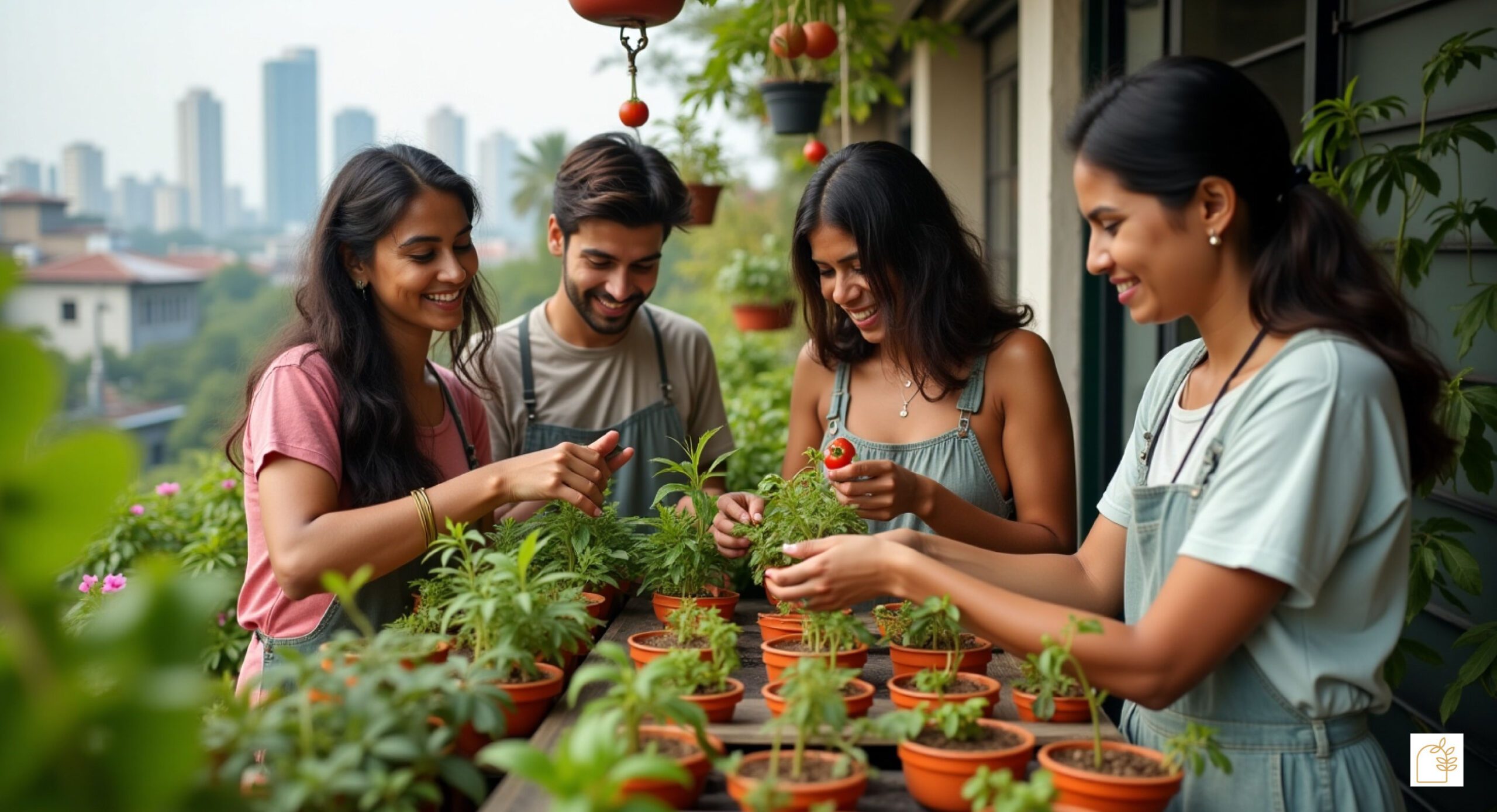
Balcony gardens for edibles cut grocery costs by 20% and reduce carbon footprints by 15% through local food production, addressing India’s 8% food inflation in 2024 (Financial Express, 2024). With 500 million social media users sharing gardening trends (Statista, 2025) and 50% of UPI transactions funding gardening supplies (NPCI, 2024), these gardens support 100+ smart cities and a $1 trillion digital economy (Smart Cities Mission, 2025). Costing ₹500–₹5,000 to set up, they’re accessible for 60.4% digital urbanites, from Mumbai’s tiny balconies to Bengaluru’s compact flats (RBI, 2024). Growing edibles like tomatoes or herbs fosters health, sustainability, and joy in urban homes.
As an urban gardening expert, I’ve cultivated edible gardens on balconies across India. This guide shares seven essential tips for designing a balcony garden for edibles in 2025, with actionable advice for success.
Tips for Balcony Garden Design for Edibles
1. Select High-Yield Edibles
Choose compact crops like cherry tomatoes, chilies, or basil, costing ₹100–₹500 for seeds, which yield harvests in 6–8 weeks (Ugaoo, 2025). In Delhi, 65% of gardeners grow herbs for quick results (Knight Frank, 2024).
Actionable Tip: Buy seeds at ugaoo.com.
2. Use Vertical Planters
Vertical or stackable planters, priced ₹300–₹1,500, save 30% of balcony space and suit small apartments (Financial Express, 2024). In Mumbai, wall-mounted planters maximize tiny balconies (The Hindu, 2024).
Actionable Tip: Shop planters at trustbasket.com.
3. Maximize Sunlight
Place pots on railings or corners with 4–6 hours of sunlight, boosting yields by 25% (Ugaoo, 2025). In Bengaluru, south-facing balconies are ideal for tomatoes and spinach (Smart Cities Mission, 2025).
Actionable Tip: Use reflective sheets from amazon.in to enhance light.
4. Invest in Quality Soil Mix
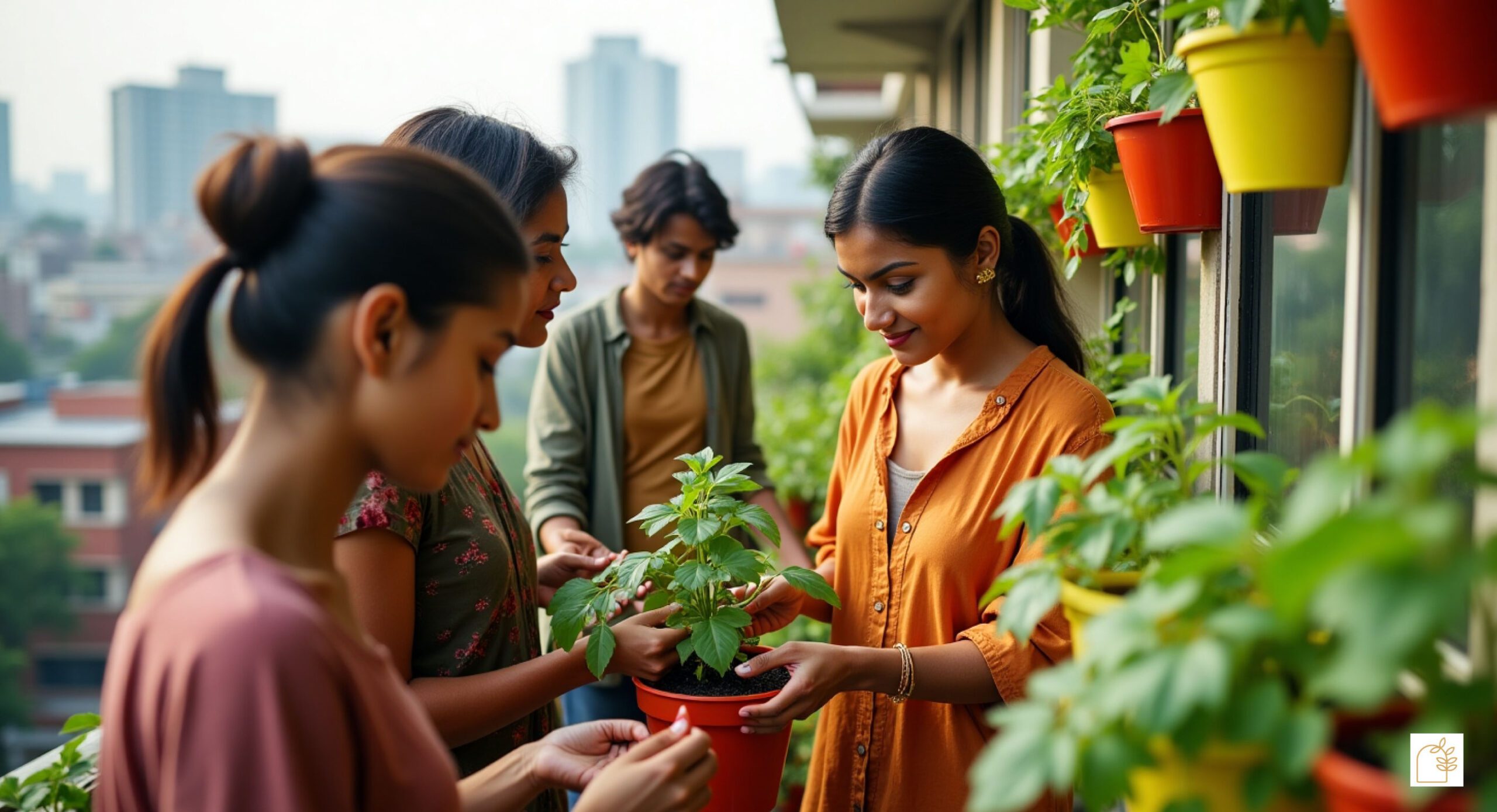
Organic soil and compost, costing ₹200–₹800, improve crop health by 20% (The Hindu, 2024). In Chennai, vermicompost supports 3,500 green projects (FICCI, 2024).
Actionable Tip: Buy soil mixes at flipkart.com.
5. Implement Drip Irrigation
Drip irrigation kits or self-watering pots, priced ₹500–₹2,000, reduce water use by 30% (Economic Times, 2024). In Hyderabad, these systems promote sustainable gardening (CEA, 2024).
Actionable Tip: Shop irrigation kits at pepperagro.in.
6. Control Pests Organically
Neem oil or organic sprays, costing ₹150–₹500, protect 80% of crops from pests (Financial Express, 2024). In Pune, neem is popular among MSME gardeners (MSME Ministry, 2024).
Actionable Tip: Buy neem oil at amazon.in.
7. Use Gardening Apps for Guidance
Free apps like Plantix or Ugaoo offer care tips, increasing yields by 15% for 60.4% digital gardeners (RBI, 2024). In Ahmedabad, apps guide new gardeners (Statista, 2025).
Actionable Tip: Download apps from play.google.com.
Balcony Garden Design Tips Table 2025
| Tip | Cost (₹) | Key Benefits | Impact in India |
|---|---|---|---|
| High-Yield Edibles | 100–500 | Yields harvests in 6–8 weeks | Popular in Delhi for quick results |
| Vertical Planters | 300–1,500 | Saves 30% balcony space | Suits Mumbai’s tiny balconies |
| Maximize Sunlight | Free–200 | Boosts yields by 25% | Ideal for Bengaluru balconies |
| Quality Soil Mix | 200–800 | Improves crop health by 20% | Supports Chennai green projects |
| Drip Irrigation | 500–2,000 | Reduces water use by 30% | Enhances Hyderabad sustainability |
| Organic Pest Control | 150–500 | Protects 80% of crops | Favored by Pune MSME gardeners |
| Gardening Apps | Free | Increases yields by 15% | Guides Ahmedabad digital gardeners |
Applications of Balcony Gardens for Edibles
- Cost Savings: Reduces grocery bills by 20% for urban families (Financial Express, 2024).
- Sustainability: Supports 3,500 green projects with low-resource methods (FICCI, 2024).
- Urban Health: Provides chemical-free produce for 60.4% urbanites (RBI, 2024).
- MSMEs: Supplies fresh herbs for 63 million businesses (MSME Ministry, 2024).
- Content Creation: Fuels gardening vlogs for 500 million social media users (Statista, 2025).
Actionable Tip: Start with basil seeds from ugaoo.com for easy, flavorful harvests.
Benefits of Balcony Gardens for Edibles
- Affordability: Setup costs ₹500–₹5,000, accessible to most budgets (Ugaoo, 2025).
- Health: Homegrown edibles are pesticide-free, boosting nutrition (The Hindu, 2024).
- Sustainability: Cuts carbon footprint by 15% via local production (Financial Express, 2024).
- Aesthetics: Adds greenery, enhancing balcony appeal by 20% (Economic Times, 2024).
Actionable Tip: Use vertical planters to grow chilies for space-efficient harvests.
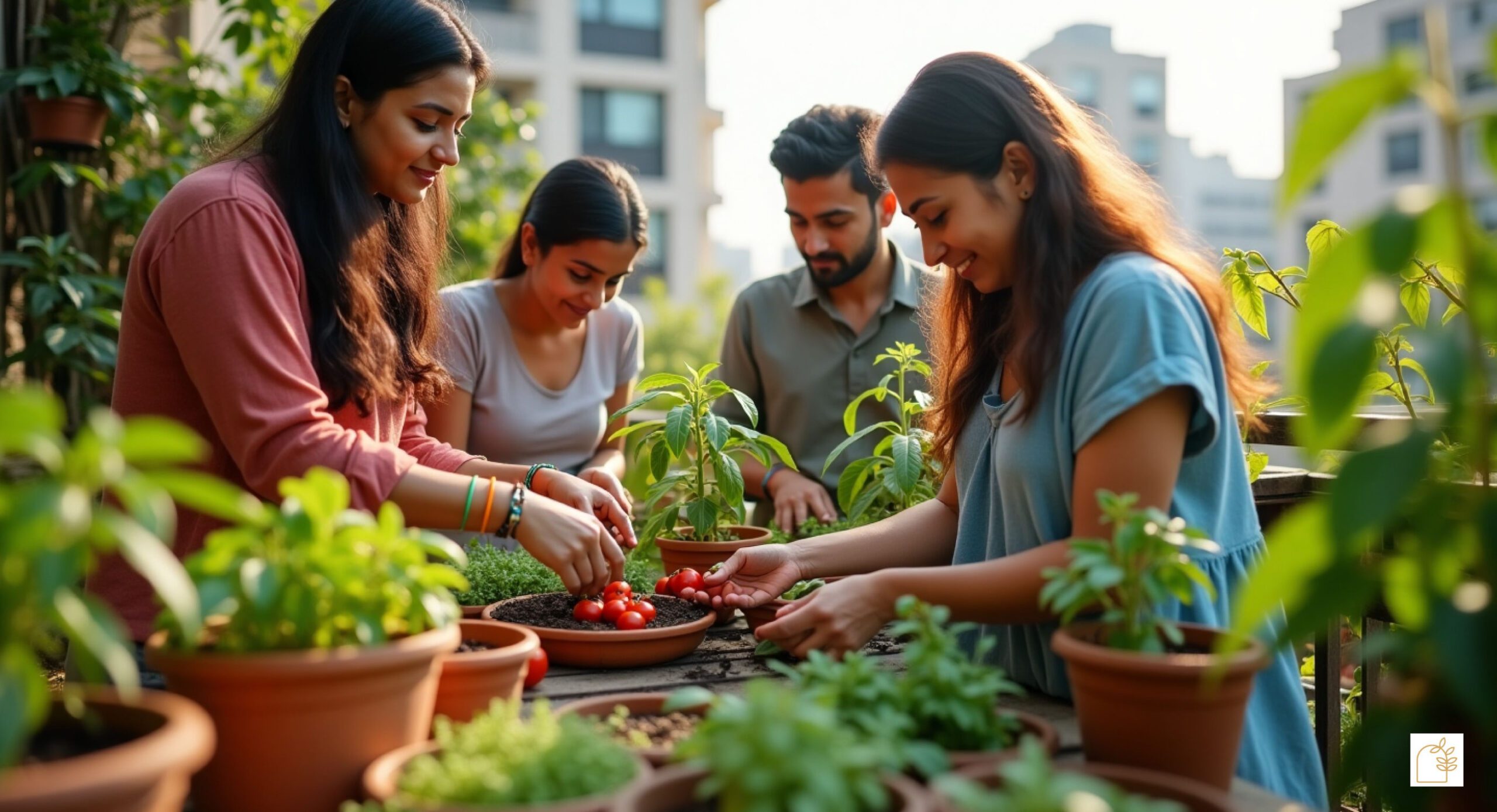

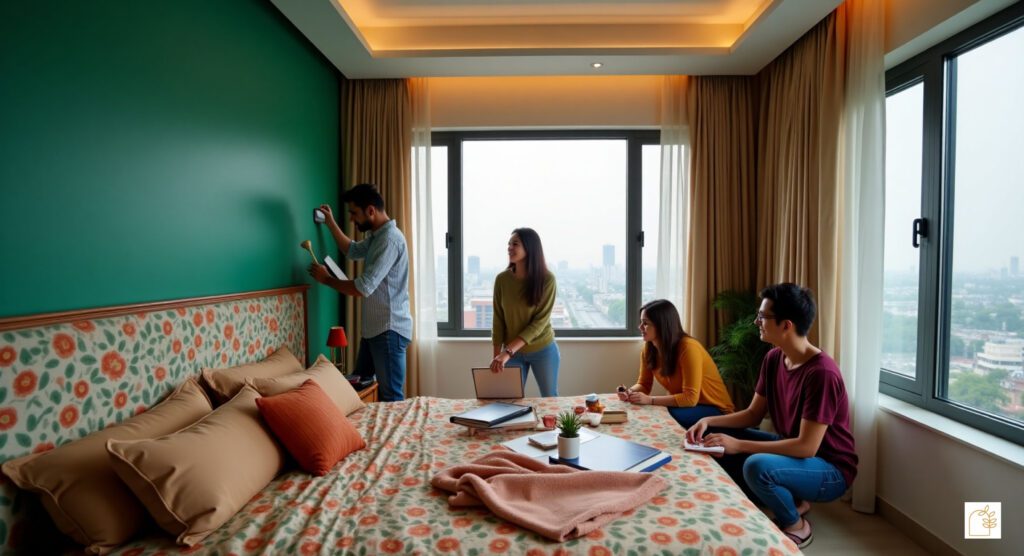
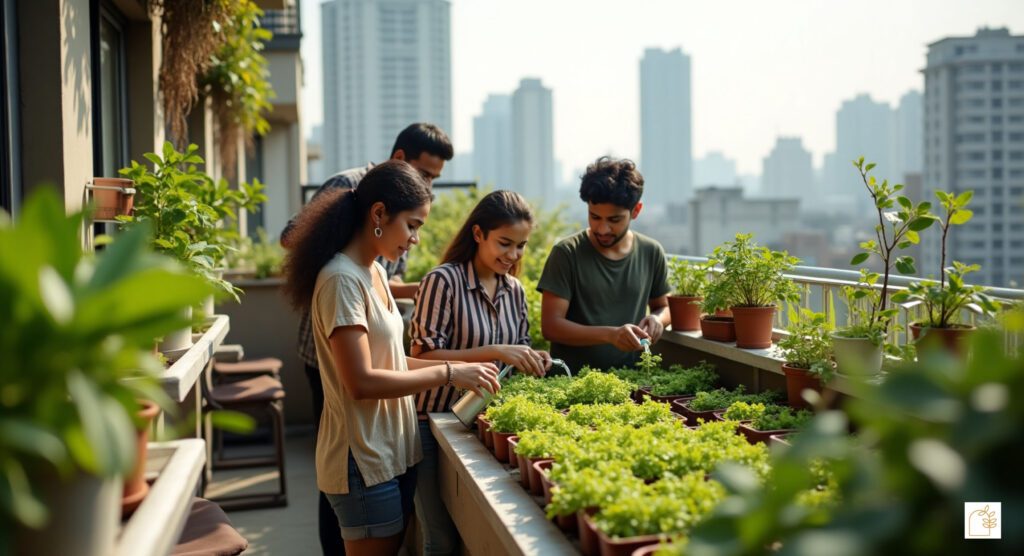
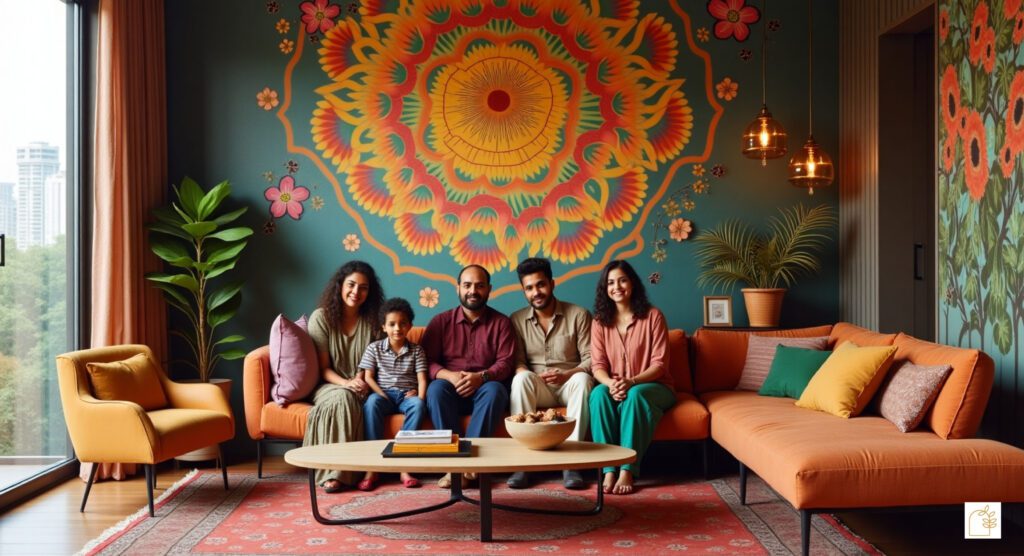
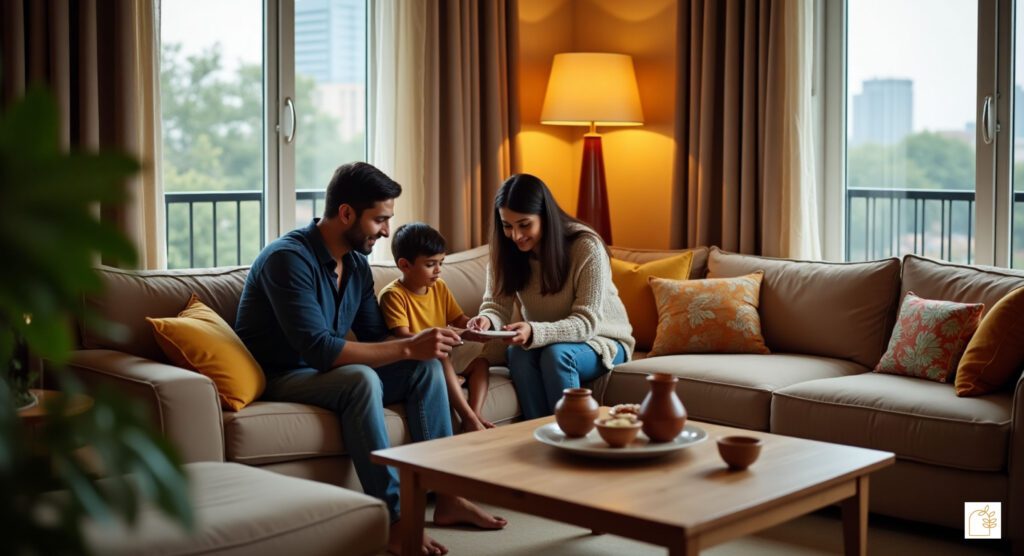
1 thought on “Balcony Garden Design for Edibles in India 2025: Grow Your Own Food in Small Spaces”